Pricing Guides & Dictionary of Makers Marks for Antiques & Collectibles

ANTIQUE AND COLLECTIBLE GLASS PAPERWEIGHTS:
A Timeless Art Form
Join the most updated and complete collectibles research online - Learn more...
 Glass paperweights have been used for centuries to hold down papers and letters, but they have also become a highly sought-after art form. These small, intricate creations are a testament to the skill and creativity of their makers, and they have become highly collectible. From antique glass paperweights to contemporary designs, there is a wide variety of styles and techniques to explore. In this article, we will take a closer look at the history of glass paperweights, how they are made, and what makes them so special.
Glass paperweights have been used for centuries to hold down papers and letters, but they have also become a highly sought-after art form. These small, intricate creations are a testament to the skill and creativity of their makers, and they have become highly collectible. From antique glass paperweights to contemporary designs, there is a wide variety of styles and techniques to explore. In this article, we will take a closer look at the history of glass paperweights, how they are made, and what makes them so special.
The History of Glass Paperweights
Glass paperweights have been around for hundreds of years, but it wasn't until the mid-19th century that they became a true art form. In 1845, a Frenchman named Ysart started making glass paperweights in his home, using techniques that had been passed down from generations before. His paperweights were highly sought-after, and he soon had competition from other makers in France and England.
The first paperweights were made using a technique called millefiori, which involves creating a pattern from thin glass rods or canes that are fused together. This technique was used for making glass beads and other small objects, but it was adapted for paperweights by encasing the millefiori canes in clear glass. This created a magnifying effect that made the intricate patterns even more impressive.
In the late 19th century, a new technique called lampworking was developed, which allowed for even more intricate designs. Lampworking involves heating glass rods with a torch and manipulating them while they are hot. This allowed makers to create detailed designs like flowers and animals that were suspended in clear glass.
How Glass Paperweights Are Made
Glass paperweights are made using a variety of techniques, but the basic process involves melting glass in a furnace and then shaping it into the desired form. The glass is then cooled slowly to prevent cracking and annealed to remove any internal stresses. The final step is to polish the surface of the paperweight to create a smooth, clear finish.
One of the most popular techniques for making glass paperweights is called lampworking, which was developed in the 19th century. Lampworking involves heating glass rods with a torch and then shaping them into intricate designs. These designs are then encased in clear glass to create a magnifying effect.
Another popular technique is called millefiori, which involves creating a pattern from thin glass rods or canes that are fused together. This technique was adapted for paperweights by encasing the millefiori canes in clear glass, creating a magnifying effect.
What Makes Glass Paperweights Collectible?
Glass paperweights are highly collectible because of their beauty, intricate designs, and historical significance. Antique glass paperweights, in particular, are highly sought-after because they represent a time when paperweights were not only functional but also works of art.
Some of the factors that make a glass paperweight collectible include:
- Age: Antique paperweights are highly collectible because they represent a bygone era and often feature unique designs and techniques.
- Rarity: Paperweights that were made in limited quantities or by a particular maker are highly sought-after by collectors.
- Condition: Paperweights that are in excellent condition, with no chips or cracks, are more valuable than those that have been damaged.
- Maker: Paperweights made by certain makers, such as Baccarat and Clichy, are highly prized by collectors.
Contemporary Glass Paperweights
While antique glass paperweights are highly collectible, contemporary glass paperweights have also become popular with collectors. Today, there are many glass artists who are creating beautiful and intricate paperweights using a variety of techniques.
One of the most popular contemporary glass paperweight artists is Paul Stankard. Stankard's paperweights are known for their botanical designs, which often feature detailed images of flowers, roots, and insects. His paperweights are highly prized by collectors and have been exhibited in museums around the world.
Other contemporary glass paperweight artists include Rick Ayotte, who is known for his wildlife designs, and Josh Simpson, who creates abstract designs using a variety of techniques.
Caring for Glass Paperweights
Glass paperweights are delicate objects that require proper care to ensure that they last for many years. Here are some tips for caring for your glass paperweights:
- Handle with care: Glass paperweights should be handled carefully to avoid dropping or knocking them over. They should be stored in a safe place where they won't be accidentally bumped or knocked over.
- Avoid direct sunlight: Glass paperweights should be kept away from direct sunlight, as UV rays can cause the glass to fade or discolor over time.
- Clean with care: If you need to clean your glass paperweight, use a soft, lint-free cloth to gently wipe the surface. Avoid using harsh chemicals or abrasive cleaners, as these can scratch or damage the glass.
- Store properly: If you need to store your glass paperweights, wrap them in soft tissue paper and store them in a box or cabinet where they won't be jostled or bumped.
Conclusion
Antique and collectible glass paperweights are a timeless art form that has captured the hearts of collectors around the world. From the intricate designs of antique paperweights to the contemporary creations of modern glass artists, there is a wide variety of styles and techniques to explore. Whether you're a serious collector or simply appreciate the beauty and craftsmanship of these small works of art, glass paperweights are a fascinating and rewarding area of collecting. With proper care and attention, glass paperweights can be enjoyed for many years to come.
Unlock the true value of your collection with our comprehensive research guides from identifying makers' marks to appraising all kinds of antiques and collectibles, including items featured in this article.
Our up-to-date information will give you an accurate understanding of your items' worth. Don't miss out on this valuable resource - visit our research tools today!
In addition to some examples shown below on this page, you can also search our price guide for your own treasures.
Examples of related items from our Price Guides
-
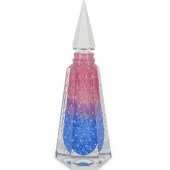 RARE STEUBEN CINTRA PAPERWEIGHT STYLE CO
[more like this]
RARE STEUBEN CINTRA PAPERWEIGHT STYLE CO
[more like this]
-
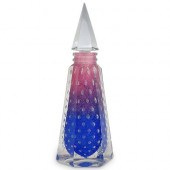 RARE STEUBEN CINTRA PAPERWEIGHT STYLE CO
[more like this]
RARE STEUBEN CINTRA PAPERWEIGHT STYLE CO
[more like this]
-
 SIX PIECES OF SIGNED PAPERWEIGHT ART GLA
[more like this]
SIX PIECES OF SIGNED PAPERWEIGHT ART GLA
[more like this]
-
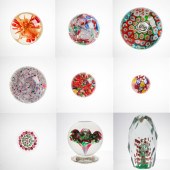 (LOT OF 9) GROUP OF GLASS PAPERWEIGHTS (
[more like this]
(LOT OF 9) GROUP OF GLASS PAPERWEIGHTS (
[more like this]
-
 ART GLASS PAPERWEIGHT COLLECTION Group o
[more like this]
ART GLASS PAPERWEIGHT COLLECTION Group o
[more like this]
-
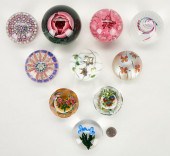 10 ART GLASS PAPERWEIGHTS INCL. BANFORD,
[more like this]
10 ART GLASS PAPERWEIGHTS INCL. BANFORD,
[more like this]
-
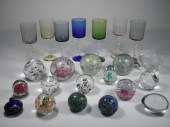 Lot of assorted art glass paperweights s
[more like this]
Lot of assorted art glass paperweights s
[more like this]
-
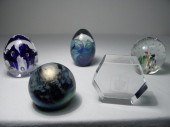 Lot of five assorted art glass paperweig
[more like this]
Lot of five assorted art glass paperweig
[more like this]
-
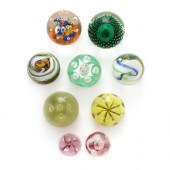 NINE ART GLASS PAPERWEIGHTS, INCLUDING C
[more like this]
NINE ART GLASS PAPERWEIGHTS, INCLUDING C
[more like this]
-
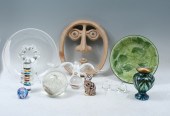 VARIOUS PORCELAIN AND GLASS TREASURE LOT
[more like this]
VARIOUS PORCELAIN AND GLASS TREASURE LOT
[more like this]
-
 8 ST. LOUIS FRANCE PAPERWEIGHTS, INCL FA
[more like this]
8 ST. LOUIS FRANCE PAPERWEIGHTS, INCL FA
[more like this]
-
 ASSORTED GROUP OF 10 PAPERWEIGHTSAssorte
[more like this]
ASSORTED GROUP OF 10 PAPERWEIGHTSAssorte
[more like this]
There are many more auction results available to our members...





